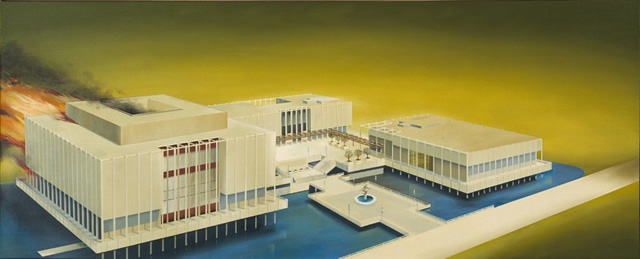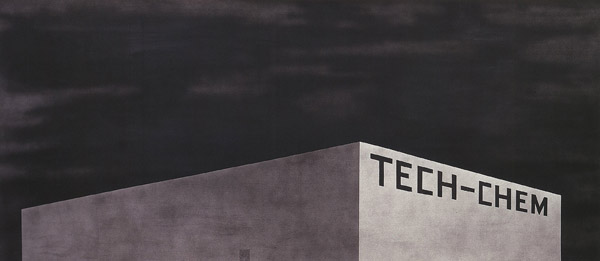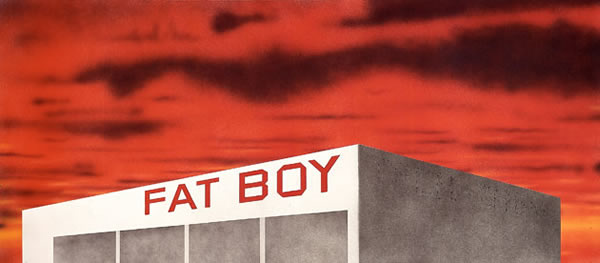The current exhibition Crash at the Gagosian is a mish-mash of artworks, by a stellar cast of artists, with a vaguely 'Ballardian' connatation, however tenuous (I'm still struggling to connect Jeff Koons "New Hoover Convertibles" to Ballard, for instance - perhaps I'm just not trying).
To me, the recent exhibition of Ed Ruscha at the Hayward Gallery had a much stronger Ballardian resonance. The most potent evocation of Ballard was in the painting 'Los Angeles County Museum on Fire', completed in 1968. In planning this painting, Ruscha commented that "he always planned to assault the building somehow".

In a 2006 interview, Ruscha commented:
"I’m not lighting fires," he said. "It’s a way of attaching an additional meaning to the painting that would otherwise not have fire — if I can be so simple to say. And it's fun to paint fire." Asked if "there isn’t an embedded desire to burn the Los Angeles County Museum," Ruscha said, "No. But if you want to see that as a political painting, you can — a revolt against an authority figure."
At first glance this carefully painted aerial perspective looks almost like an architect's presentation drawing. The newly finished museum, designed in 1965 by William Pereira, is a pristine temple to art, in a mid-century Intenational style. Looking closer reveals a sinister subtext: the building is on fire. Ruscha metaphorically tries to destroy the building before it has even opened. The fire and smoke helps create the powerful diagonal visual element which is present in many of Ruscha's paintings such as Standard Station (which Ruscha also painted on fire in a later work).


There are strong recurrent themes in Ruscha's work that echo with a Ballardian sensibility. In 2005, Ruscha revisited the Blue Collar series of paintings of buildings first made in 1992. Thus the building in Blue Collar Tech-Chem becomes a Fat Boy fastfood restaurant, the Blue Collar Tool and Die is now a Japanese factory, while the Trade School has become a derelict ruin. This ephemerality of the environment, the narrative of built form, has been a constant theme of Ballard's work from The Drowned World right up to Kingdom Come.
